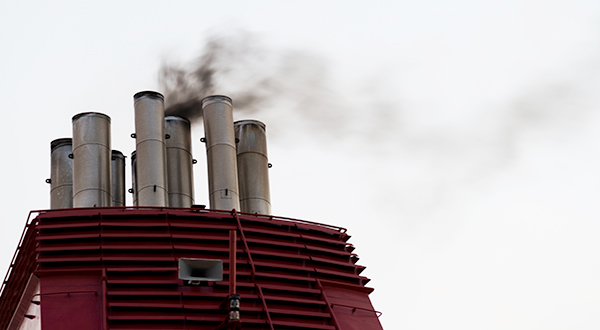The ship management company Carl Büttner GmbH & Co. KG and SAACKE GmbH were satisfied with the first year of operation of the Exhaust Gas Cleaning Systems (EGCS) on the tanker MT Levana. Besides its compliant operation in line with the emission guidelines specified by the International Maritime Organization (IMO), the savings on expensive low-sulfur fuel by the pilot installation were also convincing. While the ship management company benefitted from lower fuel costs, SAACKE gathered valuable experience for the development of the series product. The authorization of the closed-loop process for zero-discharge operation in February 2016 means that the tanker can now operate with heavy fuel oil on every shipping channel and is also equipped for future, stricter emission guidelines.
The background to the conversion of the tanker is the gradual reduction of the specifications for sulfur content in the exhaust gas by the IMO. Since the start of 2015, only values that can be achieved with a diesel fuel with 0.1 percent sulfur are permitted in the Emission Control Areas (ECA) in the North Sea and Baltic Sea. To avoid the use of expensive low-sulfur fuel, SAACKE’s EGC system reduces the sulfur content in high-sulfur heavy fuel oil by up to 99 percent with exhaust gas scrubbing. In open-loop operation, seawater is used for desulfurization and released back into the ocean. However, the discharging of the water used for desulfurization is not possible in zero-discharge zones. In these areas, predominantly in the Elbe and Weser as well as various ports worldwide, a ship is not permitted to discharge washing water into open bodies of water. Instead, residues are collected in tanks and transferred to specialist waste disposal companies at the port. SAACKE offers a combination of open- and closed-loop scrubbers as a hybrid system.
Authorization by classification society confirms successful pilot phase
The pilot installation on the MT Levana was approved for the open-loop process at the end of 2014 following a one-year test phase by the classification society DNV GL. At the same time, SAACKE expanded the scrubber for closed-loop operation and started testing. The Bredo dock in Bremerhaven converted tanks for storing caustic soda and the temporary storage of process water so that the MT Levana could also operate with a closed-loop in zero-discharge zones. Following a successful test phase in the 2015/2016 winter months, the DNV GL issued its official authorization for the entire system in February.
Sustainable and cost-effective solution for new constructions and conversions
“The pilot installation on the MT Levana allowed us to gain valuable experience for the series production, including a flexible 2-tower solution and improved measurement technology. The scrubber is perfectly designed for operation in the Emission Control Areas and reduces fuel costs, since no costly low-sulfur fuel has to be bunkered. The amortization period of the systems depends on the navigation area and equipment as well as the operating situation. Despite the currently low fuel price, in many cases it is still well under three years”, says Nils Homburg, Manager Exhaust Gas Cleaning Department at SAACKE.
The scrubber is designed for both new ship constructions as well as for retrofits, especially in light of the tightening of global limit values expected from 2020 on.
Source:






























































